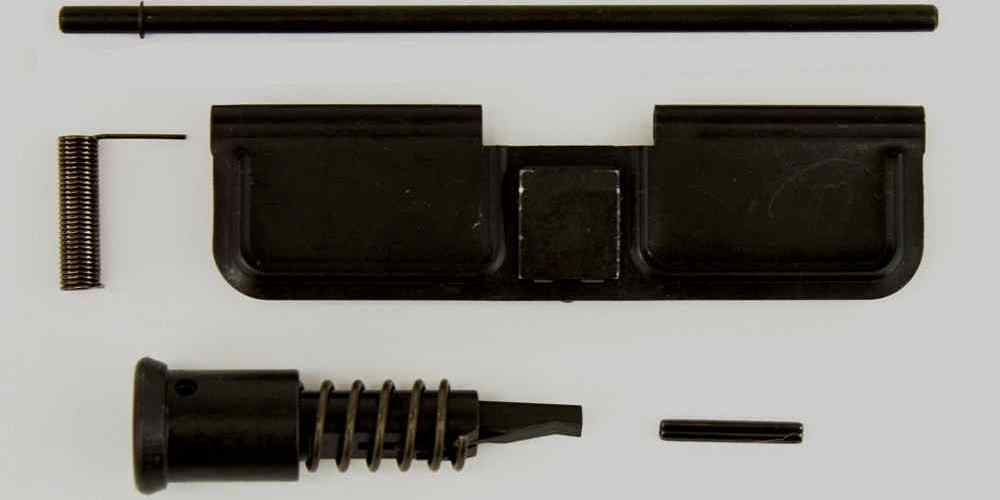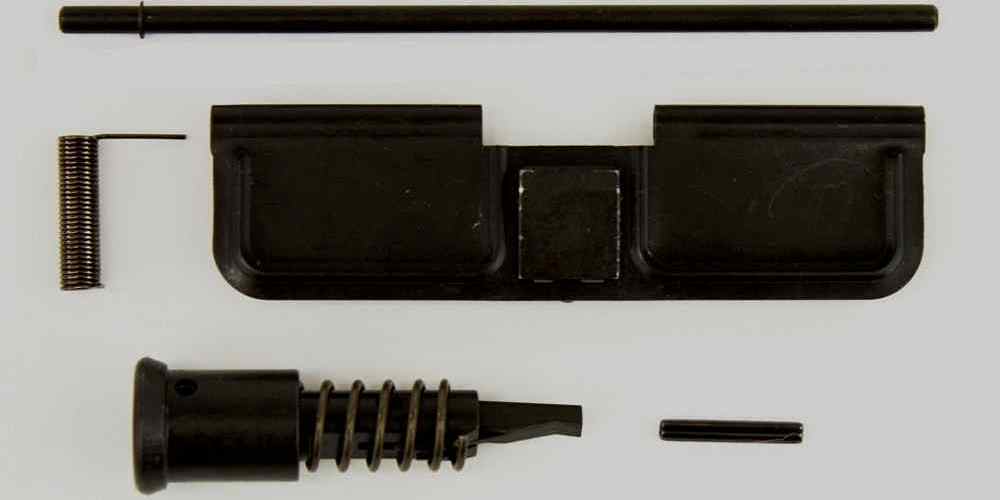“Precision starts at the foundation: The importance of the lower receiver in building a match-grade AR15.”
Benefits of Using a Billet Lower Receiver
Building a match-grade AR15 rifle requires attention to detail and precision in every component. One crucial part of the AR15 is the lower receiver, which plays a significant role in the overall performance of the rifle. When it comes to choosing a lower receiver for your build, there are two main options: forged and billet. In this article, we will explore the benefits of using a billet lower receiver for your match-grade AR15 build.
Billet lower receivers are machined from a solid block of aluminum, as opposed to forged receivers which are made by stamping and shaping metal into the desired form. This difference in manufacturing process gives billet receivers several advantages over their forged counterparts. One of the main benefits of using a billet lower receiver is the increased strength and durability it provides. The solid construction of a billet receiver makes it less prone to stress fractures and other forms of damage, ensuring that your rifle will perform reliably under even the most demanding conditions.
In addition to their superior strength, billet lower receivers also offer greater customization options. Because they are machined from a solid block of aluminum, billet receivers can be easily modified to accommodate unique features such as enlarged trigger guards, flared magazine wells, and integrated QD sling mounts. This level of customization allows you to tailor your rifle to your specific needs and preferences, giving you a truly personalized shooting experience.
Another advantage of using a billet lower receiver is the aesthetic appeal it adds to your rifle. Billet receivers are known for their sleek and modern appearance, with clean lines and smooth contours that give your AR15 a high-end look and feel. Whether you are building a rifle for competition shooting or simply want a firearm that stands out from the crowd, a billet lower receiver is sure to turn heads at the range.
When it comes to performance, billet lower receivers also offer some distinct advantages. The precision machining process used to create billet receivers results in tighter tolerances and a more consistent fit between the upper and lower receiver. This tight fit helps to eliminate play and wobble between the two halves of the rifle, improving accuracy and overall performance. Additionally, the increased rigidity of a billet receiver can help to reduce felt recoil and muzzle rise, allowing you to stay on target more effectively during rapid fire.
In conclusion, the benefits of using a billet lower receiver for your match-grade AR15 build are clear. From increased strength and durability to greater customization options and improved performance, a billet receiver offers a range of advantages that make it an excellent choice for serious shooters. Whether you are building a rifle for competition, hunting, or personal defense, a billet lower receiver can help you achieve the level of precision and reliability you need to succeed. So why settle for anything less? Upgrade your AR15 build with a billet lower receiver today and experience the difference for yourself.
How to Choose the Right Lower Receiver for Your AR15 Build
Building a match-grade AR15 is a rewarding experience for any gun enthusiast. One of the key components in this process is the lower receiver. The lower receiver is the foundation of your AR15 build, and choosing the right one is crucial to achieving optimal performance. In this article, we will discuss the role of the lower receiver in your AR15 build and provide some tips on how to choose the right one for your needs.
The lower receiver is the part of the AR15 that houses the trigger group, magazine well, and buffer tube. It is also the serialized part of the firearm, meaning that it is the only part that is regulated by the ATF. The lower receiver plays a critical role in the overall function and accuracy of your AR15, so it is important to choose one that is well-made and suited to your specific needs.

When selecting a lower receiver for your match-grade AR15 build, there are several factors to consider. One of the most important considerations is material. Lower receivers are typically made from either aluminum or polymer. Aluminum receivers are more durable and offer better performance, while polymer receivers are lighter and more affordable. If you are looking for maximum performance and durability, an aluminum lower receiver is the way to go.
Another important factor to consider when choosing a lower receiver is compatibility. Not all lower receivers are compatible with all upper receivers, so it is important to ensure that the lower receiver you choose is compatible with the upper receiver you plan to use. This will ensure that your AR15 functions properly and reliably.
In addition to material and compatibility, you should also consider the features and design of the lower receiver. Some lower receivers come with built-in trigger guards, enhanced magwells, and other features that can improve the performance and ergonomics of your AR15. Consider what features are important to you and choose a lower receiver that meets your needs.
When it comes to selecting a lower receiver for your match-grade AR15 build, quality is key. Look for lower receivers from reputable manufacturers that have a track record of producing high-quality products. A well-made lower receiver will provide a solid foundation for your AR15 build and ensure that your rifle performs reliably and accurately.
In conclusion, the lower receiver plays a critical role in the performance and accuracy of your match-grade AR15 build. When choosing a lower receiver, consider factors such as material, compatibility, features, and quality. By selecting a well-made lower receiver that meets your specific needs, you can ensure that your AR15 build is reliable, accurate, and optimized for performance. Happy building!
The Importance of a Match-Grade Trigger in Building an AR15
Building a match-grade AR15 is a rewarding experience for any gun enthusiast. One of the key components in achieving precision and accuracy is the lower receiver. The lower receiver is the foundation of the AR15, housing the trigger group and magazine well. When building a match-grade AR15, the lower receiver plays a crucial role in ensuring a smooth and consistent trigger pull.
A match-grade trigger is essential for achieving accuracy and precision in shooting. A standard mil-spec trigger may have a heavy and gritty pull, which can affect shot placement and consistency. A match-grade trigger, on the other hand, is designed to have a lighter pull weight, a crisp break, and minimal creep. This allows for better control and accuracy when shooting.
When selecting a lower receiver for a match-grade AR15 build, it is important to choose one that is compatible with a match-grade trigger. Some lower receivers may not have the necessary features or dimensions to accommodate a match-grade trigger. It is recommended to choose a lower receiver that is specifically designed for use with a match-grade trigger to ensure optimal performance.
In addition to compatibility with a match-grade trigger, the material and construction of the lower receiver also play a role in the overall performance of the AR15. Lower receivers are typically made from aluminum, with 7075-T6 being the most common material used for match-grade builds. This material is known for its strength and durability, making it ideal for high-performance applications.
The design of the lower receiver can also impact the performance of the AR15. Some lower receivers feature enhanced ergonomics, such as an enlarged trigger guard or an integrated trigger guard, which can improve comfort and control when shooting. Additionally, some lower receivers may have a flared magazine well for faster and easier magazine changes.
When building a match-grade AR15, attention to detail is key. Every component, including the lower receiver, should be carefully selected to ensure compatibility and optimal performance. It is important to research and compare different options to find the best lower receiver for your specific needs and preferences.
In conclusion, the lower receiver plays a crucial role in building a match-grade AR15. It is the foundation of the rifle, housing the trigger group and magazine well. When building a match-grade AR15, it is important to choose a lower receiver that is compatible with a match-grade trigger and made from high-quality materials. Attention to detail and careful selection of components will ensure a high-performance rifle that is accurate and reliable.
Upgrading Your Lower Receiver for Improved Accuracy
Building a match-grade AR15 is a rewarding experience for any gun enthusiast. One of the key components in achieving superior accuracy is the lower receiver. While often overlooked, the lower receiver plays a crucial role in the overall performance of your rifle. In this article, we will explore the importance of the lower receiver in building a match-grade AR15 and discuss how upgrading this component can lead to improved accuracy.
The lower receiver is the foundation of your AR15, housing the trigger group, magazine well, and buffer tube. It is responsible for housing the fire control group, which includes the trigger, hammer, and disconnector. A high-quality lower receiver is essential for consistent and reliable performance. Upgrading to a match-grade lower receiver can enhance the overall feel and performance of your rifle.
When selecting a lower receiver for your match-grade AR15, there are several factors to consider. Material, fit, and finish are all important considerations when choosing a lower receiver. Aluminum is the most common material used for lower receivers due to its lightweight and durable properties. A precision-machined lower receiver will ensure a tight fit with other components, reducing play and improving accuracy. A high-quality finish will protect the lower receiver from corrosion and wear, ensuring longevity and reliability.
Upgrading your lower receiver can have a significant impact on the accuracy of your AR15. A match-grade lower receiver will provide a more stable platform for the fire control group, resulting in a smoother trigger pull and improved shot placement. The increased rigidity of a match-grade lower receiver can also enhance the overall consistency and precision of your rifle. By upgrading to a match-grade lower receiver, you can achieve tighter groupings and improved accuracy at longer distances.
In addition to enhancing accuracy, upgrading your lower receiver can also improve the ergonomics and aesthetics of your AR15. Many match-grade lower receivers feature enhanced grip textures and ergonomic designs for improved handling and control. Upgrading to a lower receiver with a sleek and stylish finish can also give your rifle a custom look and feel. Whether you are a competitive shooter or a recreational enthusiast, upgrading your lower receiver can take your AR15 to the next level.
When upgrading your lower receiver, it is important to consider compatibility with other components of your AR15. Ensure that the lower receiver is compatible with your upper receiver, buffer tube, and other accessories. It is also important to follow proper installation procedures to ensure a secure and reliable fit. If you are unsure about how to upgrade your lower receiver, consult with a professional gunsmith or experienced shooter for guidance.
In conclusion, the lower receiver plays a critical role in building a match-grade AR15. Upgrading to a match-grade lower receiver can improve accuracy, consistency, and overall performance of your rifle. By selecting a high-quality lower receiver and following proper installation procedures, you can enhance the feel, function, and aesthetics of your AR15. Whether you are looking to improve your shooting skills or simply enhance the look of your rifle, upgrading your lower receiver is a worthwhile investment.
Customizing Your Lower Receiver for a Personalized AR15 Build
Building a match-grade AR15 is a rewarding experience for any gun enthusiast. One of the key components in this process is the lower receiver, which plays a crucial role in the overall performance of the rifle. Customizing your lower receiver allows you to personalize your AR15 build and optimize its functionality to suit your specific needs and preferences.
When it comes to building a match-grade AR15, the lower receiver is often overlooked in favor of more flashy components like barrels and triggers. However, the lower receiver is the foundation of your rifle and can have a significant impact on its accuracy and reliability. By customizing your lower receiver, you can enhance the performance of your AR15 and create a truly unique firearm that reflects your individual style.
One of the first decisions you’ll need to make when customizing your lower receiver is choosing the material. Lower receivers are typically made from either aluminum or polymer, with aluminum being the more popular choice for match-grade builds due to its durability and strength. Aluminum lower receivers are also more rigid than polymer ones, which can help improve the overall accuracy of your rifle.
Once you’ve selected the material for your lower receiver, you can start customizing it to suit your needs. One popular customization option is to add an ambidextrous safety selector, which allows for easier manipulation of the safety with either hand. This can be particularly useful for left-handed shooters or for those who prefer to switch between shooting positions quickly.
Another common customization for lower receivers is the addition of an extended magazine release. This modification makes it easier to quickly and efficiently change magazines, which can be crucial in competitive shooting or tactical situations. An extended magazine release can also help prevent fumbling with the magazine release button under pressure, ensuring smooth and reliable operation of your AR15.
In addition to safety selectors and magazine releases, there are a variety of other customization options available for lower receivers. These include trigger guards, bolt catches, and even custom engraving. By choosing the right combination of customizations for your lower receiver, you can create a truly personalized AR15 build that meets your exact specifications and preferences.
When customizing your lower receiver, it’s important to consider how each modification will affect the overall performance of your rifle. For example, adding a heavier trigger may improve accuracy but could also slow down your rate of fire. Similarly, a larger trigger guard may be more comfortable for shooters with larger hands but could also add unnecessary bulk to your rifle.
Ultimately, the key to building a match-grade AR15 is finding the right balance of customizations for your lower receiver. By carefully selecting and installing the right components, you can create a rifle that is not only accurate and reliable but also reflects your unique style and preferences. So take the time to explore the many customization options available for lower receivers and build a personalized AR15 that is truly one-of-a-kind.





